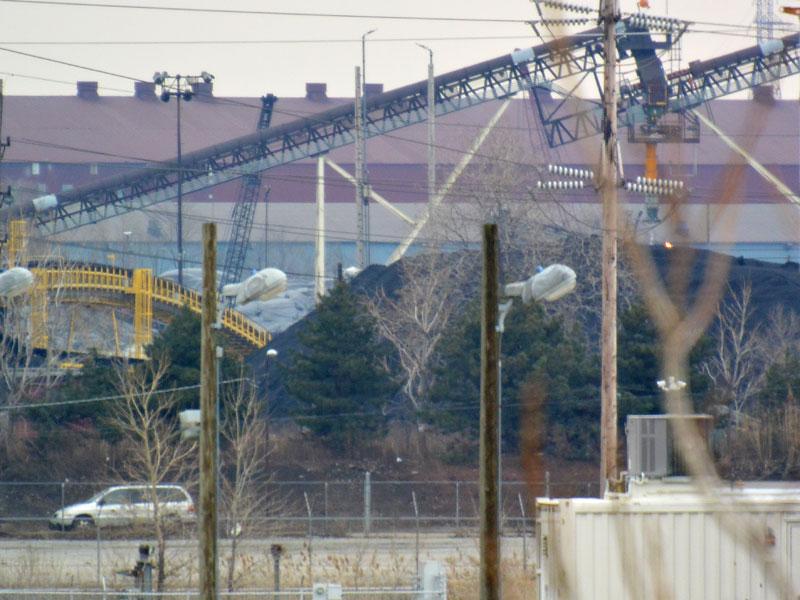What is EPA Doing about Pet Coke in Chicago?
 A passing car shows the scale of a petroleum coke pile on Chicago's South Side.
A passing car shows the scale of a petroleum coke pile on Chicago's South Side.In late summer 2013, residents of southeast Chicago reported windblown dust and water pollution believed to be caused by three large petroleum coke (also called pet coke or petcoke) storage and handling facilities on the Calumet River. At the time, two were owned by KCBX Terminals, Inc., and one was owned by Beemsterboer Slag Corp. There are currently no outdoor petcoke storage piles at any of the three facilities.
EPA worked closely with Illinois EPA, the Illinois Attorney General’s Office and the Chicago Department of Public Health to address residents’ concerns with windblown dust, evaluate health risks and ensure compliance with environmental regulations at these facilities.
Monitoring
EPA required Beemsterboer and KCBX to monitor the concentration of dust (also known as particulate matter or soot) in the air near the three pet coke sites. As of July 2016, monitoring is only being conducted at the KCBX South Terminal. EPA publishes this monitoring data on this website.
- Learn more about the Beemsterboer and KCBX required monitoring
- Fenceline Air Monitoring at Pet Coke Storage Facilities
- Analysis of Pet Coke Samples - As part of the required monitoring, KCBX submitted samples of the petroleum coke stored on each of their sites for us to analyze in our labs.
Notices of Violation
Section 308 Information Requests
EPA investigated petcoke discharges from vessels to the Calumet River and the surrounding Chicago waterways. To insure that petcoke does not blow from ships and barges into waters in Chicago, EPA issued Requests for Information under the Clean Water Act (also called Section 308 information requests) which require vessels delivering petcoke to facilities in Chicago to report on efforts to control blow of petcoke from barges and ships.
